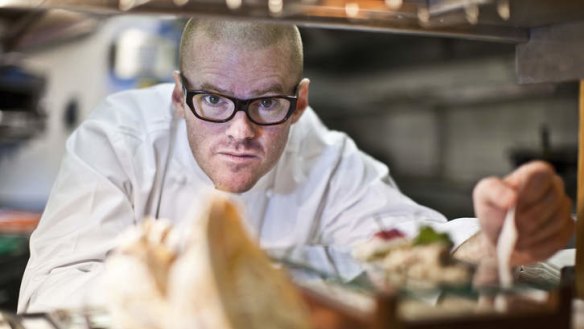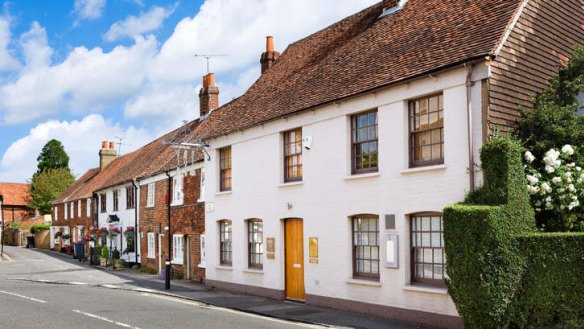Lessons from Heston Blumenthal, kitchen wizard

Believe it or not, Heston Blumenthal has had his fair share of kitchen disasters. In 1995, The Fat Duck opened with a bang - quite literally - when the oven exploded on day two, leaving Blumenthal to finish service with a bag of frozen peas strapped to his head. More recently, Blumenthal spent years trying to create savoury flavoured fairy floss, to little avail. “After four years, I learnt that maybe I should stop trying to flog a dead horse,” says the Michelin-starred chef.
Thankfully, Blumenthal has had countless more successes. As one of the world's most recognised chefs, he is renowned for creating mind-boggling dishes that draw on scientific wizardry, from nitro-scrambled egg and bacon ice-cream, to Sound of the Sea (a dish of tapioca, seaweed, abalone, clams and cockles, eaten while listening to an iPod with the sound of crashing waves) and Meat Fruit (chicken liver parfait encased in a mandarin gel, resembling a piece of fruit.)
The self-taught chef was recently in Melbourne to film five episodes for Network Ten's MasterChef (to air August 4). He sat down with goodfood.com.au to share a few of the kitchen lessons he's learnt along the way.
Temperature
Of all the technology at Blumenthal's fingertips, a simple thermometer is always within reach. Temperature control takes the guesswork out of cooking, says Blumenthal, regardless if you're in a professional or home kitchen.
“Let's say you're hosting a posh summer lunch and you splash out on a whole salmon. What most people are going to do is wait until white dots form on the surface of the salmon. By then the fish is overcooked, but it's safer than serving raw fish. Whereas if you have a thermometer, you can measure when the internal temperature reaches 50°C and you'll have perfectly cooked salmon, every single time,” says Blumenthal.

The same principle applies to any piece of meat, no matter your preference. If you're after a bleu steak, Blumenthal recommends an internal temperature of 45°C, 50°C for rare, 55°C is medium-rare, 60°C is medium and 70°C will be well done.
The surface temperature of your pan, grill or oven can't be ignored - although it's a common stumbling block, says Blumenthal. Generally the pan is not hot enough when cooking steak (the pan should be on high-heat and cooking oil should smoke, to get maximum caramelisation), or the oven is too hot when cooking roasts or stews (low and slow is best to retain moisture), he says.
Seasoning
“Most people season with salt and pepper, but we should think about seasoning in terms of the full flavour spectrum: sweet, sour, salty, bitter and umami,” says Blumenthal.
He considers salt to be the most important ingredient in the kitchen, but says that most home cooks don't use enough. When cooking soups or stews, he recommends removing a small cupful, then gradually adding salt (to the cup only), to determine the right amount of salt required for the dish.
The same rule applies for sourness, with vinegar. Blumenthal serves a mushroom soup, garnished with a drop of vinegar, at The Crown at Bray, a pub within walking distance of The Fat Duck.
“Umami is hard because it's quite tricky to recognise on its own,” says Blumenthal. “But once you get it, you can pick it out in parmesan, soy sauce, tomato ketchup, shiitake mushrooms, seaweed... lots of things.”
Ageing meat
Most farmers, butchers and chefs agree that high-quality beef improves with age. But most home cooks don't have the luxury of a temperature-controlled hanging room. Blumenthal recommends placing a piece of meat on a cake rack, set on top a plate or a drip tray, and placing this uncovered in the fridge. After a few days, remove the meat from the fridge, trim off the dry exterior and bring up to room temperature before cooking.
A few words from Heston on "molecular gastronomy" ...
“One of the biggest misnomers is the term molecular gastronomy,” says Blumenthal.
The term molecular gastronomy was coined in the 1980s by Nicolas Kurti, a Hungarian physicist at Oxford University. Kurti lamented, “It is a sad reflection on our civilisation that while we can and do measure the temperature in the atmosphere of Venus, we do not know what goes on inside our souffles.”
Says Blumenthal: “Kurti's idea was that chefs could learn from scientists and scientists could learn from chefs, but at some point it became associated with test tubes and foams,” “It has become elitist and pigeonholed as weird food,” he says.
Simply boiling an egg is an example of true molecular gastronomy, says Blumenthal. “There's a scientific reason why the egg white will set at a different temperature to the yolk and why a particular egg will work for a souffle and another egg won't.”
“At some point gas was incredibly modern technology and electricity was ground-breaking. The fact that all this technology is available doesn't mean you have to cook weird food. Modern cooking shouldn't define a style; it is a set of principles and techniques that can make a difference to home cooks, as well as professionals.”
The best recipes from Australia's leading chefs straight to your inbox.
Sign up